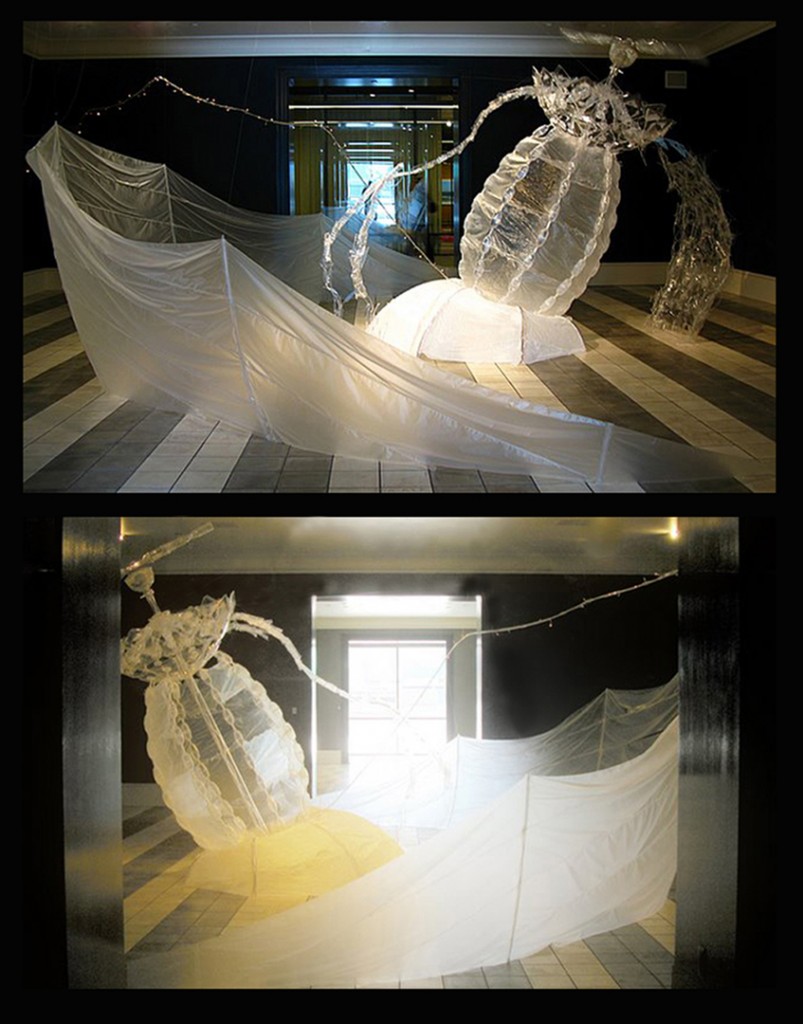Born of a strange confluence between Pacific Standard Time, Mike Kelley’s suicide, and the unanticipated liquidation of her father’s art foundation, Claudia Bucher’s upcoming show at L2Contemporary could be expected to have a bitter tone. Thankfully, any darkness is tempered by longing, hope, and the lighter side of science-fiction, escapism. Exploding out of a decaying, Swiss-made wooden clock (her father was Swiss-born), relics and mementos of Bucher’s past are encased in archival plastic, and used to create transparent, curved walls and sci-fi architecture around the room. The suspended apparent chaos might remind some of Maurizio Cattelan’s retrospective, “All†at the Guggenheim, and it’s true, Bucher’s show is also the beginning of a retrospective of sorts, specifically addressing Bucher’s life from 0 to 26 (the rest will come later) and is largely suspended throughout the room. But that’s where the similarity ends, because Bucher’s installation is not an amalgamated mobile of her past works, but uses actual documentation and real records about and not just from her life as an artist, to create an installation that addresses the very question of recovering and reframing fading histories. It is in a real way, a show of ephemera about ephemerality.
There has been an impressive amount press of press coverage throughout Bucher’s life – indeed, not many of us can create sculptures literally papered with newspaper articles about our lives or and families – so it is ironic that Bucher is “preoccupied with lost histories, erasure, invisibility, ephemerality, the unearthing and reframing of histories.†Furthermore, Bucher’s work, often performative, and has ever been shown only once or twice, and exist now only in documentation.
Although Bucher made art news with performative body installations (she was once mistaken for a prostitute selling her body in a shop window – even though she was fully clothed and wearing car parts on her head in Claud’s Body Shop, 1988), recent exhibitions just how far Bucher can get away from the visceral performative, without leaving her body or personal history behind. Skinray Explorer 1 (2009), for instance, is representative of her newer work. Bucher constructed a tissue paper mold of herself, and then engulfed the feather-light, delicate “astral body†in a winged, manta-suit made of also made of tissue and sheer fabric. The entire piece is strung to the ceiling like a complex marionette, ready at moment’s notice to launch into the ether sphere. Like an astral body, it is a vehicle of escape; a way to float out of the mundane pain of existence; a means of being and not-being Claudia.
In this “morphospectiveâ€, Bucher uses the past to build a present that looks like the future, with the transparent walls recalling similar space (or deep sea) aesthetic. Get lost in the room and you will find yourself scrutinizing news paper articles of Ca Laboratories International (her performance space in Florida in the mid-80’s which later lead to the start of the Critical Art Ensemble with Steve Kurtz) or gazing at an oil painting Bucher did in high school, right next to an original painting by Milic od Macve, which inspired it.
But what can these ethereal fantasy space ships have to do with death, retrospectives, and family estates? They become the vehicle for what Bucher calls “a sense of past-present-future as a looped simultaneity with form and structure … contrary to the idea of the linear “timeline.” It is more of an investigation into the complexity of influences, and the level of personal is deep enough to resonate universally. Happily, unlike Cattelan’s show, this “morphospective†does not mark an end of an art career, but simply a deserved mid-career pause to look backwards.

